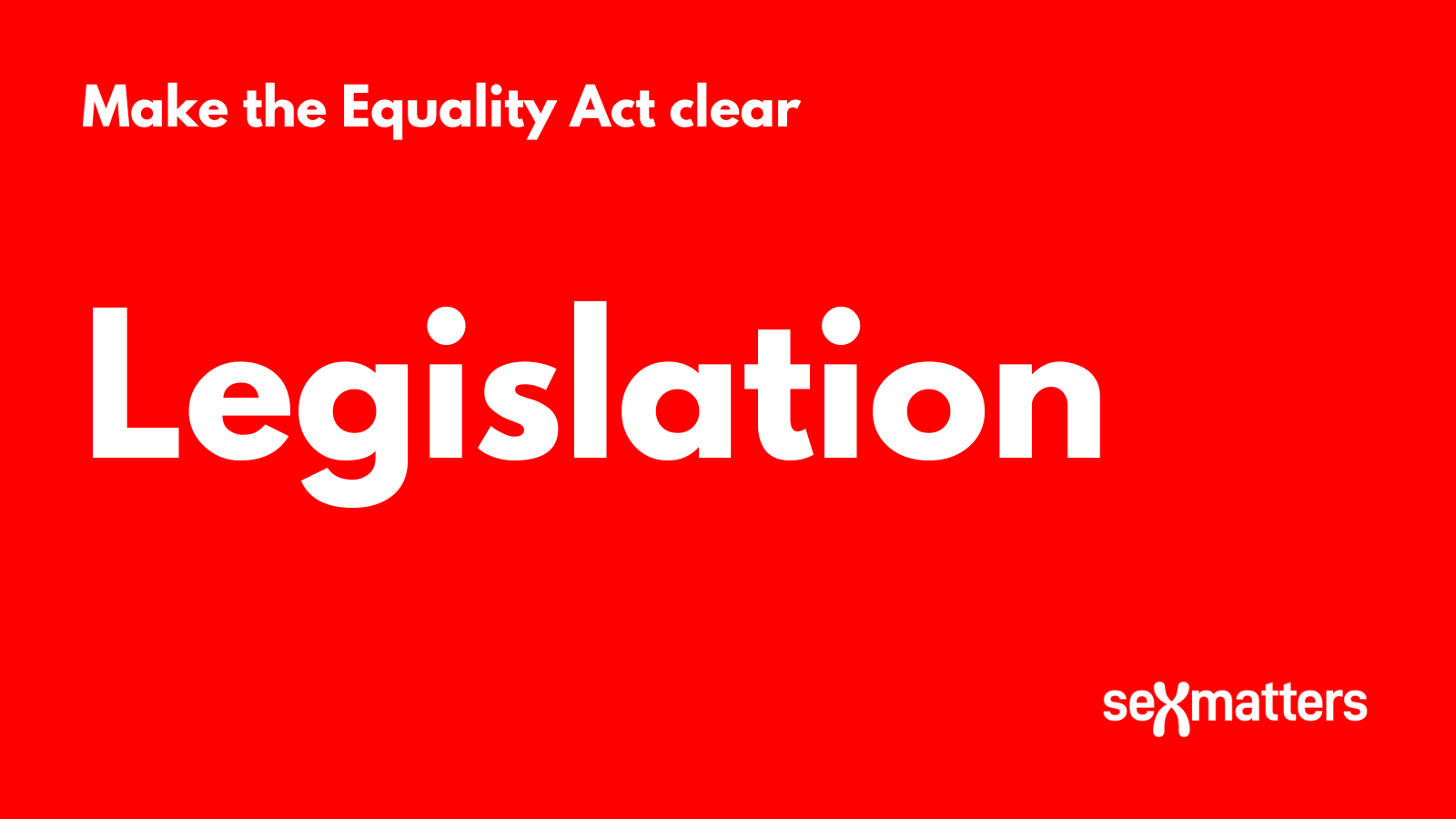Why the Equality Act should be sorted out with legislation

This is the fifth in a series of blog posts in the run up to the debate on 12th June about clarifying the Equality Act.
Stonewall argues that clarifying the Equality Act is unnecessary.
But the Equality Act is ambiguous, with legal experts unable to say with certainty whether it means a person’s actual sex, or whether it means sex as modified by a gender-recognition certificate. Leaving this ambiguity to fester makes it hard for organisations to draw up clear policies and more likely that they will end up in court.
Women who want the act clarified will end up spending more of their hard-earned money taking test cases to try to win back their rights. But being a claimant is hard. You have to be willing to commit yourself to a lengthy conflict with your employer or service provider. It can cost hundreds of thousands of pounds and years of your life. You lose your privacy and your peace of mind.
Neither individual women nor transgender people, nor the businesses and public services they interact with, should be forced into litigation just to work out what a law means. When it comes to the Equality Act, they should be able to rely on guidance from the Equality and Human Rights Commission (EHRC), the statutory regulator whose job it is to explain precisely this. It has a mandate to do so and a budget of several million pounds a year, but it has been unable to – not for lack of trying, but because the law is ambiguous.
The meaning of the protected characteristic of “sex” and what it means for single-sex services, associations, schools and charities should fit on a postcard. It is up to the Government, using its lawful powers granted by Parliament, to solve this.
Instead businesses, schools and public bodies are having to spend thousands of pounds on bespoke legal advice to try to answer a simple question. The overall bill for this needless legal activity will be in the millions, if not billions, and will only rise as more people seek clarity. The conflict is taking up hours and hours of management time, and is souring the culture of businesses and charities.
The internal conflict within the EHRC itself, which has spilled out into the media, is a demonstration of this. An organisation whose job it is to understand the law has fallen out with itself over what it means. How can a small business or school be expected to manage?
And when cases get to court, the judges flounder. When asked to decide on questions that relate to the definition of sex, they are at pains to point out that they are not ruling on wider questions about women’s rights and transgender people’s rights: they are only able to judge the facts of the specific case put before them, and the particular part of the Equality Act it engages. They are only ever able to consider the interests of the claimant and the respondent.
But the questions about rights matter, and litigation is no way to decide the meaning of a term that has such wide-ranging implications across society.
- Should lesbians be allowed to have their own organisations without men who are sexually attracted to women joining if they get a government certificate?
- Should sports organisations be able to consider fairness to female athletes not only in competition but also in training, funding and outreach programmes?
- Should a woman paid less than a male colleague lose the right to make an equal pay claim if that colleague gets a gender certificate?
- Does a young woman who feels like a man lose her right to sex-discrimination protection related to pregnancy if she has been awarded a gender certificate?
- Whose rights must an organisation consider when deciding whether a job that involves strip-searching women can be undertaken by someone who is male but has a certificate that says female?
- When considering how their policies affect men and women as required under the public-sector equality duty, must public bodies work on the understanding that some women have a penis?
These are just some of the questions that require answers. They were not debated in Parliament when the Gender Recognition Act was passed: instead, the GRA was created with a mechanism on the face of the act for future governments to solve these problems by clarifying how the Gender Recognition Act interacts with other laws.
The responsibility now rests with government to use its lawful powers to clarify the intent of the legislation.
